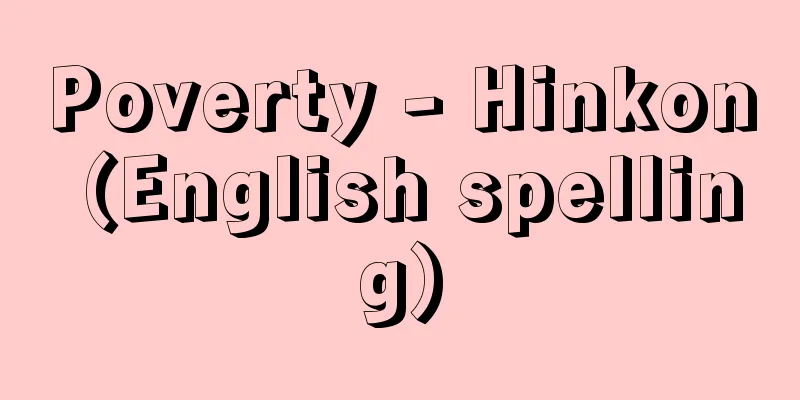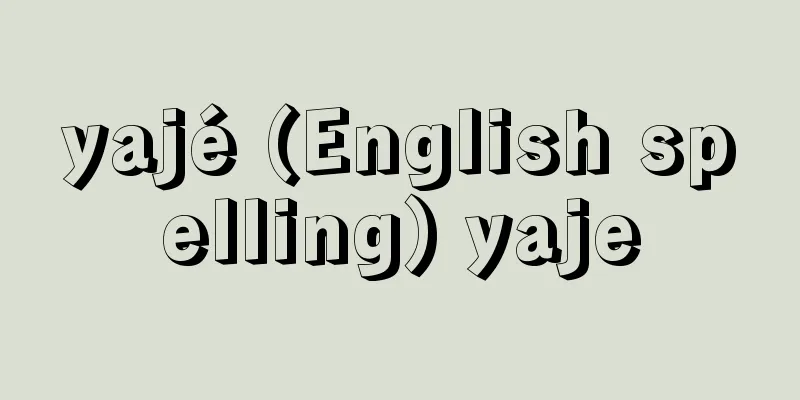White birch

|
A fan magazine. First published in April 1910 (Meiji 43), and ceased publication in August 1923 (Taisho 12). A total of 160 issues. It was the longest-running and most influential fan magazine before World War II. The circulating magazine "Boya" (which was renamed "Boya" after a few issues; this "Boya" period lasted the longest, and was later renamed "Shirakaba"), written by Gakushuin alumni Mushanokoji Saneatsu, Shiga Naoya, Kinoshita Rigen, and Ogimachi Kinkazu, the circulating magazine "Mugi" written by underclassmen Satomi Ton, Sonoike Kinyuki, Kojima Kikuo, and Tanaka Uson, and the circulating magazine "Momozono" written by Yanagi Muneyoshi and Kori Torahiko, merged, and with the addition of Arishima Takeo and Arishima Ikuma, it started out as the publicly published "Shirakaba." As the number of titles increased, Nagayo Yoshiro, Kishida Ryusei, Senge Motomaro, Kurata Hyakuzo, Bernard Leach, Koizumi Magane, Inukai Takeru, Umehara Ryuzaburo, Ozaki Kihachi, Takada Hiroatsu, Nakagawa Kazumasa, Tomimoto Kenkichi and others also joined. They focused on cultivating the individuality of the "ten different people," and almost no one fell behind, producing leading figures in each field, including novels, plays, poetry, research, translation and painting. When it was first published, it opposed naturalist literature, boldly affirmed the ego, and was filled with an atmosphere that was not bound by old customs, refreshingly opening up the skylights of the stagnant Meiji literary world. The cover of the first issue was a sketch of a young birch tree by Kojima Kikuo. After that, it made full use of paintings by Arishima Ikuma, Bernard Leach, Kishida Ryusei, Tomimoto Kenkichi, and other Western artists, and featured Rodin issues. It also held Shirakaba art exhibitions, and art and literature both played a role in driving the growth of the group. In particular, the introduction of European art, mainly Post-Impressionism, had a great influence on contemporaries. From the beginning, they did not acknowledge the authority of senior literary writers, did not ask for help, and built a forum on their own. Even when people read "Shirakaba" backwards and ridiculed them as idiots, they overcame the situation optimistically and maintained the spirit of "harmony without uniformity." The friendship between the members of Shirakaba was ultimately lifelong, even though there were times when they broke off or were restored to normal. However, the eldest member, Takeo Arishima, was essentially an outsider to the Shirakaba. Mushakoji's early "Miscellaneous Thoughts" were powerful, expressing his beliefs directly in simple words, and he published plays such as "His Sister." Shiga published short stories such as "To Abashiri," "The Razor," "Han's Crime," "At Kinosaki," and "The Little Monk's God," and Satomi Ton published works such as "You and I." In his early days, Yanagi Muneyoshi was interested in studying Blake and other writers, and in his later years, he showed an interest in Korean folk art that included criticism of Japan's colonial policies. Nagayo focused on long stories such as "The Blind River" and the play "Han and Liu Bang." Kinoshita Rigen wrote tanka, Senge Motomaro wrote poetry, and Arishima Takeo serialized "A Certain Woman's Glimpse," the first part of "A Certain Woman." Even after Mushakoji embarked on the creation of the "New Village" in Hyuga, Shirakaba continued to be published, its influence was so great that many satellite magazines sprung up around it, and it became a central figure in Taisho literature, publishing its 10th anniversary issue in April 1919 (Taisho 8). It appears that some samples of the September 1923 issue had been printed, but due to the Great Kanto Earthquake, the magazine closed with the August issue. Their early books were published by Rakuyo-do under the name "Shirakaba Sosho," and there were also co-authored collections such as "Shirakaba no Mori," "Shirakaba no Sono," and "Shirakaba no Hayashi." A reprint has been published by Rinkawa Shoten. [Toshiro Akano] "The Literature of the Shirakaba School" by Honda Shugo (Shincho Bunko) Source: Shogakukan Encyclopedia Nipponica About Encyclopedia Nipponica Information | Legend |
|
同人雑誌。1910年(明治43)4月創刊、23年(大正12)8月終刊。全160冊。第二次世界大戦前の同人雑誌のなかで、最長、最大の力を発揮したもの。学習院出身の武者小路実篤(むしゃのこうじさねあつ)、志賀直哉(なおや)、木下利玄(りげん)、正親町公和(おおぎまちきんかず)らの回覧雑誌『暴矢(ぼうや)』(数号で『望野(ぼうや)』と改名。この『望野』時代がもっとも長く、末期は『白樺』と改題)、下級生の里見弴(とん)、園池公致(そのいけきんゆき)、児島喜久雄(こじまきくお)、田中雨村(うそん)らの回覧雑誌『麦』、柳宗悦(やなぎむねよし)、郡虎彦(こおりとらひこ)らの回覧雑誌『桃園』が合併、それに有島武郎(たけお)、有島生馬(いくま)も加わり、公刊『白樺』としてスタートを切る。号を重ねるにつれて長与善郎(ながよよしろう)、岸田劉生(りゅうせい)、千家元麿(せんげもとまろ)、倉田百三(ひゃくぞう)、バーナード・リーチ、小泉鉄(まがね)、犬養健(いぬかいたける)、梅原龍三郎(りゅうざぶろう)、尾崎喜八、高田博厚(ひろあつ)、中川一政(かずまさ)、富本憲吉らも参加。「十人十色」の個性の伸長に力を入れ、落伍(らくご)者をほとんど出さず、小説、戯曲、詩歌、研究、翻訳、絵画などそれぞれの領域における第一人者を輩出させた。 創刊の時期は自然主義文学に対抗、エゴ(自我)を大胆に肯定し、旧習にとらわれない雰囲気が横溢(おういつ)、行き詰まった明治の文壇の天窓をさわやかに開け放った。創刊号の表紙は児島喜久雄の白樺の若木のスケッチ。以降、有島生馬、バーナード・リーチ、岸田劉生、富本憲吉らの絵や泰西(たいせい)画家の絵、口絵を存分に用い、ロダン号を特集、また白樺美術展など開催、美術と文学は同人にとってともに成長のばねの役割を演じた。とくに後期印象派を主とするヨーロッパ美術の紹介は同時代の人々に大きな影響を与えた。彼らは出発当初より先輩の文壇作家の権威を認めず、援助を仰がず、自分たちのみの力で広場を構築、「白樺」を逆に読まれ、バカラシと嘲笑(ちょうしょう)されても、楽天的に乗り切り、「和して同ぜず」の精神を堅持した。この『白樺』の人々の友情はときに絶交、また回復などのトラブルを含みつつも究極的には生涯にわたって永続。ただし最年長者の有島武郎は本質的には『白樺』の異分子的要素をもっていた。 武者小路の初期の「雑感」は平易なことばで信念をストレートに述べて迫力があり、戯曲『その妹』など発表。志賀は『網走(あばしり)まで』『剃刀(かみそり)』『范(はん)の犯罪』『城の崎(きのさき)にて』『小僧の神様』など短編小説を掲げ、里見弴も『君と私と』など発表。柳宗悦は初期はブレイクなどの研究、後期は日本の植民地政策批判を含んだ朝鮮民族美術などに関心を示し、長与は『盲目の川』や戯曲『項羽(こうう)と劉邦(りゅうほう)』など長編に力を入れ、木下利玄は短歌、千家元麿は詩、有島武郎は『或(あ)る女』前編にあたる『或る女のグリンプス』を連載。武者小路が日向(ひゅうが)の「新しき村」の創建に乗り出しても『白樺』は継続され、影響力は甚大で、その周辺には衛星誌も続出、大正文学の中心的存在となり、1919年(大正8)4月には10周年記念号を出した。1923年9月号の見本が若干刷り上がっていたようだが、関東大震災のため8月号で巻を閉じた。彼らの初期の単行本は洛陽(らくよう)堂より「白樺叢書(そうしょ)」の名で刊行、また『白樺の森』『白樺の園』『白樺の林』などの同人合著集もある。臨川書店より復刻版が出されている。 [紅野敏郎] 『本多秋五著『「白樺」派の文学』(新潮文庫)』 出典 小学館 日本大百科全書(ニッポニカ)日本大百科全書(ニッポニカ)について 情報 | 凡例 |
>>: Shirakaba (white birch) - Betula platyphylla var. japonica; birch
Recommend
Candle - Candle
A type of lighting item. Made mainly from paraffin...
Mikura Town
Also simply called Kuramachi. They were particula...
Emperor Yuryaku
The 21st Emperor. He is said to have reigned in th...
Stolen Bucket - Stolen Bucket
…In his “Miscellany” (1608), the main theme is re...
Oya no Iwai - Oya no Iwai
…Even today, the naming of newborn babies is done...
Piezoelectric pressure gauge
...The relationship between electrical resistance...
Nakazo Madness - Nakazo Kyoran
A historical novel by Matsui Kesako. It depicts th...
Stone for sitting on
These stones are said to have been sat on by gods,...
Antillas - Antillas
...Most of the area is under the influence of tra...
Ventilation mechanics test - Ventilation mechanics test
...However, the lungs have a large functional res...
Xue Tao - Setto
A female poet of the mid-Tang Dynasty in China. H...
What is this?
There are known trees named "Nanjamonja trees...
Rhina ancylostoma
…They feed on small animals such as crustaceans. ...
Ministry of Education
A national administrative agency established by t...
Hyogo dormitory - Hyogo Ryo
A military office in the Nara period. It is divid...









